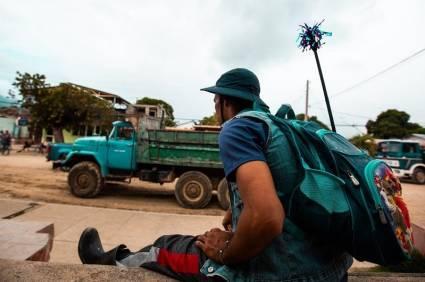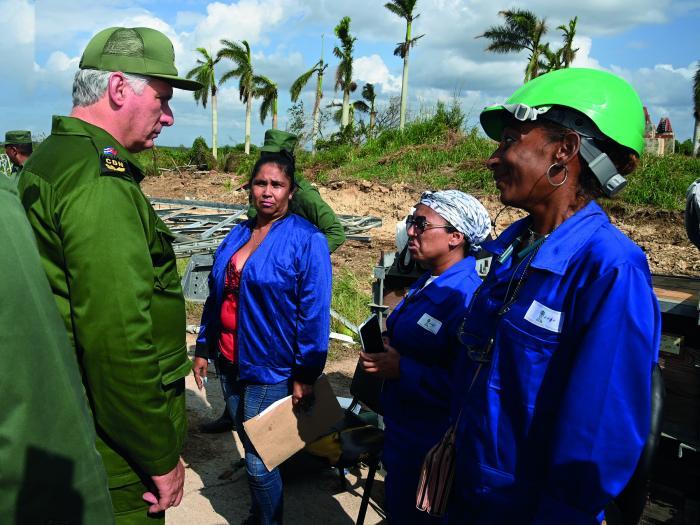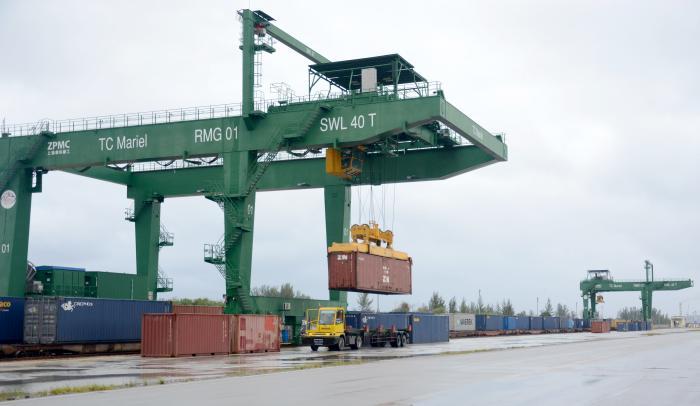

Guantánamo is working to recover the splendor that Oscar took away. Photo: Claudio Peláez Sordo
With the resumption of the school year this Monday in the municipalities of Guantanamo that were not severely affected by Hurricane Oscar, Cuba's Upper East is gradually resuming its daily rhythm.This was revealed in the daily check-up on the recovery process in this province, carried out by the country's leadership, led by the First Secretary of the Party's Central Committee and President of the Republic, Miguel Díaz-Canel Bermúdez.In Maisí, Baracoa, Imías and San Antonio del Sur, however, children, adolescents and young people will return to school next Monday. The educational institutions in the area were among the most damaged by the rains brought by cyclone Oscar, but work is being done without delay to create the conditions for the return to the classrooms.The meeting was led by the Prime Minister, Manuel Marrero Cruz; and Roberto Morales Ojeda, Secretary of Organization of the Central Committee of the Party, and Salvador Valdés Mesa, Vice President of the Republic, all members of the Political Bureau, were present.The governor of Guantánamo, Alis Azahares Torreblanca, informed that several hundreds of people are still being protected and conditions are being created for their return home, with cleaning and sanitation, or temporary shelter solutions.In a preliminary way, since it has not yet been possible to reach some isolated communities, due to the state of the access roads, more than 10,500 houses are reported to have been damaged to a greater or lesser extent in the province, and work is being carried out expeditiously at the work tables to attend to the people whose homes have been damaged.In the state area, there are more than 500 institutions with constructive damages, mainly in the education and commerce sectors; and more than 140 schools have already been recovered.As for roads, of the almost 60 kilometers devastated, about two have been rehabilitated, but intensive efforts are being made for their recovery, including undermined factory works, especially in Imías and San Antonio del Sur. However, more and more passages are being opened towards the settlements in the far east.Regarding the La Farola viaduct, two major landslides have been reported, among other damages.Electricity is reaching the towns and communities. Late on Monday afternoon, in San Antonio del Sur the service was close to 97%, although it has not been possible to reestablish it in intricate areas which are still difficult to reach by land.In Imías, the return of electricity is at 47.5 %; it is expected to cover 50 % of the municipality shortly. The historic center of Baracoa is 98% supplied; although the entire municipality is at 63%. In Maisí, 72.8% of the clients had electricity.Globally, the province of Guantánamo had service to a little more than 67% of its consumers. The Governor of the province indicated that the main damages to the network are in the fallen poles, about thirty of them broken.The water supply is at 63%, with five pumping systems with breaks and more than 20 stopped due to lack of electricity; therefore, in areas of the affected zones the liquid is being carried and bottled water is being distributed.ATTENTION IS PAID TO THE WEATHER SITUATION IN THE CARIBBEANDoctor of Science Celso Pazos Alberdi, Director General of the Institute of Meteorology, informed the meeting about the hydrometeorological situation in eastern Cuba and the weather conditions that are being generated in the southwest of the Caribbean.He explained that in the east of the Island there are still general conditions of clouds, showers and rains. He clarified, however, that the trough that was affecting, and which had remained stable, has been reactivated due to the current weather conditions, so strong levels of cloudiness are expected in the north and southeast.He commented that, in the last 24 hours, high accumulated rains have been reported in certain areas of Guantánamo, such as in Gran Tierra, Maisí, where between Sunday morning and Monday morning accumulated rainfall of 142 millimeters; and in Sabaneta, municipality of El Salvador, it exceeded 64 millimeters. During Monday, 39.7 millimeters of rain were reported in Jamal.There is a high probability of rainfall on Tuesday, not only on the north coast, but also in the interior of the municipalities affected by Oscar, and in general in all the eastern provinces.The Director General of the Meteorological Institute also explained about the conditions that are developing in the southwest Caribbean Sea, with high probabilities of generating an area of low pressure in the next few days. However, he emphasized, it is too early to create a cone of probabilities, since different forecasting centers are registering very different variables.





